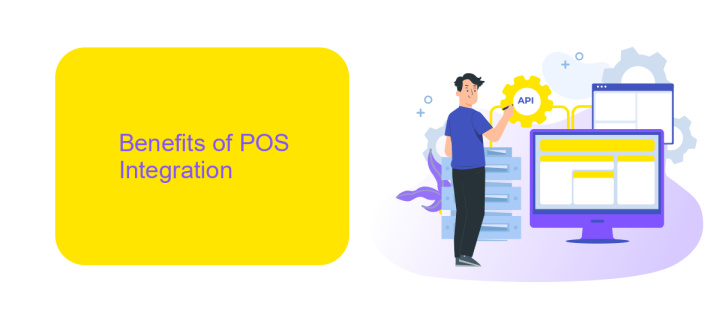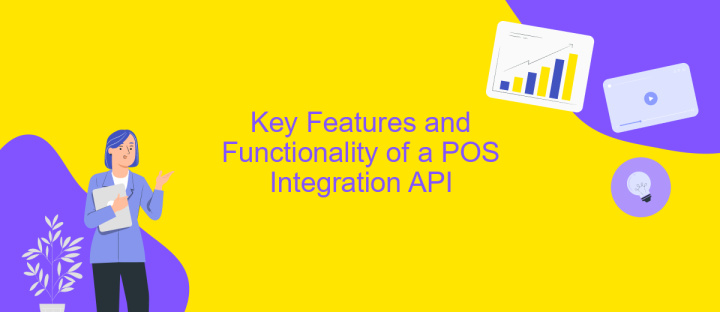Point of Sale Integration API
In today's fast-paced retail environment, efficient transaction processing is crucial for business success. A Point of Sale (POS) Integration API serves as a vital tool, enabling seamless communication between various sales platforms and backend systems. By streamlining operations, enhancing data accuracy, and improving customer experience, a robust POS Integration API empowers businesses to stay competitive and responsive to ever-evolving market demands.
Introduction to Point of Sale (POS) Integration APIs
Point of Sale (POS) Integration APIs are essential tools that enable seamless communication between POS systems and other business applications. These APIs facilitate the exchange of data, such as sales transactions, inventory levels, and customer information, thereby enhancing operational efficiency and accuracy. By leveraging POS Integration APIs, businesses can automate processes, reduce manual errors, and gain real-time insights into their operations.
- Data Synchronization: Ensures that sales and inventory data are consistently updated across all platforms.
- Improved Customer Experience: Enables personalized services by integrating customer data with CRM systems.
- Enhanced Reporting: Provides comprehensive analytics by consolidating data from multiple sources.
- Scalability: Supports business growth by allowing easy integration with new applications and services.
Incorporating POS Integration APIs into your business infrastructure can significantly streamline operations and enhance decision-making capabilities. As technology continues to evolve, these APIs offer a flexible and scalable solution for businesses looking to improve their point of sale processes. By choosing the right POS Integration API, companies can ensure a seamless and efficient workflow, ultimately leading to increased productivity and profitability.
Benefits of POS Integration

Integrating a Point of Sale (POS) system with an API offers numerous advantages that streamline business operations. One of the primary benefits is the seamless synchronization of sales data with backend systems, which enhances inventory management and reduces discrepancies. This real-time data exchange allows businesses to make informed decisions quickly, optimizing stock levels and improving customer satisfaction. Additionally, POS integration facilitates a unified view of sales across multiple channels, aiding in comprehensive reporting and analytics. This holistic approach enables businesses to identify trends, manage promotions effectively, and tailor marketing strategies to boost revenue.
Moreover, the integration process can be simplified using services like ApiX-Drive, which automates the connection between POS systems and other software applications. Such services eliminate the need for complex coding, making it accessible for businesses of all sizes. By automating data transfers, ApiX-Drive reduces manual entry errors and saves valuable time, allowing staff to focus on more strategic tasks. In essence, POS integration not only enhances operational efficiency but also empowers businesses to deliver better customer experiences, fostering growth and competitiveness in the market.
Key Features and Functionality of a POS Integration API

Point of Sale (POS) Integration APIs are essential tools that enhance the functionality and connectivity of retail systems. They enable seamless communication between different software applications, ensuring smooth operations and improved customer experiences. By leveraging a POS Integration API, businesses can streamline their processes, reduce manual errors, and gain valuable insights into their sales and inventory data.
- Real-time Data Synchronization: POS Integration APIs provide real-time updates, ensuring that inventory levels, sales data, and customer information are always current across all platforms.
- Enhanced Payment Processing: These APIs support multiple payment methods, including credit cards, digital wallets, and contactless payments, offering flexibility and convenience to customers.
- Customizable Reporting: With access to detailed analytics and reporting features, businesses can generate customized reports to track sales performance and identify trends.
- Third-party Application Integration: POS APIs allow seamless integration with various third-party applications, such as accounting software and loyalty programs, enhancing overall business operations.
- Security and Compliance: Ensuring secure transactions, these APIs adhere to industry standards and compliance regulations, protecting sensitive customer data.
Incorporating a POS Integration API into your business strategy can significantly enhance operational efficiency and customer satisfaction. By automating processes and providing real-time insights, these APIs empower businesses to make informed decisions and stay competitive in the ever-evolving retail landscape.
Implementing and Integrating a POS API

Implementing and integrating a POS API can significantly enhance the efficiency and functionality of your retail operations. The first step involves understanding the specific requirements of your business and selecting an API that aligns with those needs. Consider factors such as compatibility with existing systems, scalability, and the level of support provided by the API vendor.
Once you have selected the appropriate API, the next phase involves setting up the integration. This process requires a thorough understanding of your current POS system architecture and the technical expertise to ensure seamless connectivity. It's crucial to test the integration in a controlled environment before full deployment to identify and resolve any potential issues.
- Ensure the API supports all necessary payment methods.
- Check for real-time data synchronization capabilities.
- Verify security features to protect sensitive customer information.
- Evaluate the ease of use and flexibility of the API.
After successful integration, continuous monitoring and maintenance are essential to ensure optimal performance. Regular updates and support from the API provider can help address any emerging challenges and keep your POS system running smoothly. This proactive approach ensures your business remains agile and responsive to market demands.
- Automate the work of an online store or landing
- Empower through integration
- Don't spend money on programmers and integrators
- Save time by automating routine tasks
Best Practices and Considerations for POS API Integration
When integrating a Point of Sale (POS) API, it is crucial to ensure seamless data flow between systems. Start by thoroughly understanding the API documentation and capabilities to align them with your business requirements. Prioritize security by implementing authentication protocols and encrypting sensitive data to protect transactions and customer information. Additionally, ensure that the POS system is scalable to accommodate future growth and changes in business needs.
Consider using integration platforms like ApiX-Drive to simplify the process of connecting your POS system with other applications. Such platforms can automate data transfer, reducing manual errors and saving time. Test the integration in a controlled environment to identify potential issues before full deployment. Regularly update the API and monitor its performance to maintain optimal functionality. By following these best practices, businesses can enhance operational efficiency and improve customer experiences through effective POS API integration.
FAQ
What is a Point of Sale (POS) Integration API?
How does a POS Integration API benefit my business?
What are the key features to look for in a POS Integration API?
How can I implement a POS Integration API with minimal technical resources?
What are the security considerations when using a POS Integration API?
Routine tasks take a lot of time from employees? Do they burn out, do not have enough working day for the main duties and important things? Do you understand that the only way out of this situation in modern realities is automation? Try Apix-Drive for free and make sure that the online connector in 5 minutes of setting up integration will remove a significant part of the routine from your life and free up time for you and your employees.


